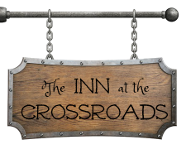“A dozen crystals, no larger than seeds, rattled across the parchment he’d been reading. They shone like jewels in the candlelight, so purple that the maester found himself thinking that he had never truly seen the color before… In the Citadel, it was simply called the strangler.” -Clash of Kings
” The Strangler”
To make your own Tears of Lys, or other Westerosi “poisons”, you’ll need a few simple things.
- rock candy, in purple, clear, and other colors of your choice
- small glass vials
Break the candy up into individual crystals. Try not to overhandle it, as the dye is usually applied to the outside of the candy, rather than mixed in with the sugar. Divide a few crystal between the vials, and hand out to guests as party favors. Remember that these are costly and rare poisons, so a few go a long way. For extra instructions, as well as printable Westerosi “poison” labels, check out the GoT party planning guide.
“This is a crueler poison, but tasteless and odorless, hence easier to hide. The tears of Lys, men call it.” -A Feast for Crows
Party Game: try to sneak your “tears” into others drinks throughout the evening. Whoever gets a crystal in his/her glass is “dead” for the purposes of the game. Anyone left alive wins. If there are multiple winners, decide the champion by how many other guests he/she “killed”. You can also use “poisons” of different colors, especially if the drink of choice is white wine or something similarly see through.








 Tansy Tea
Tansy Tea





